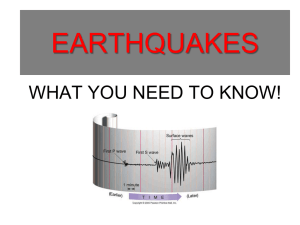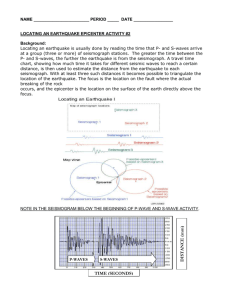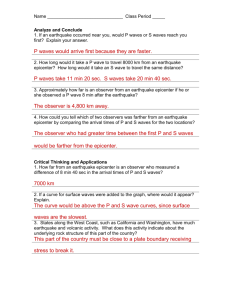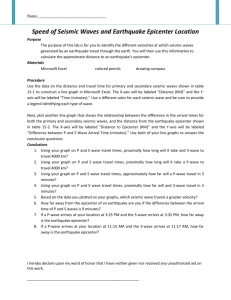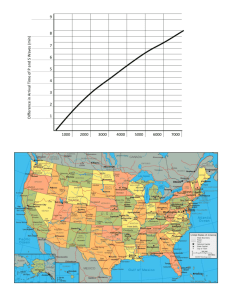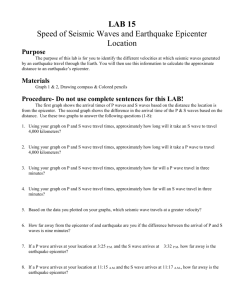Finding Epicenter
advertisement
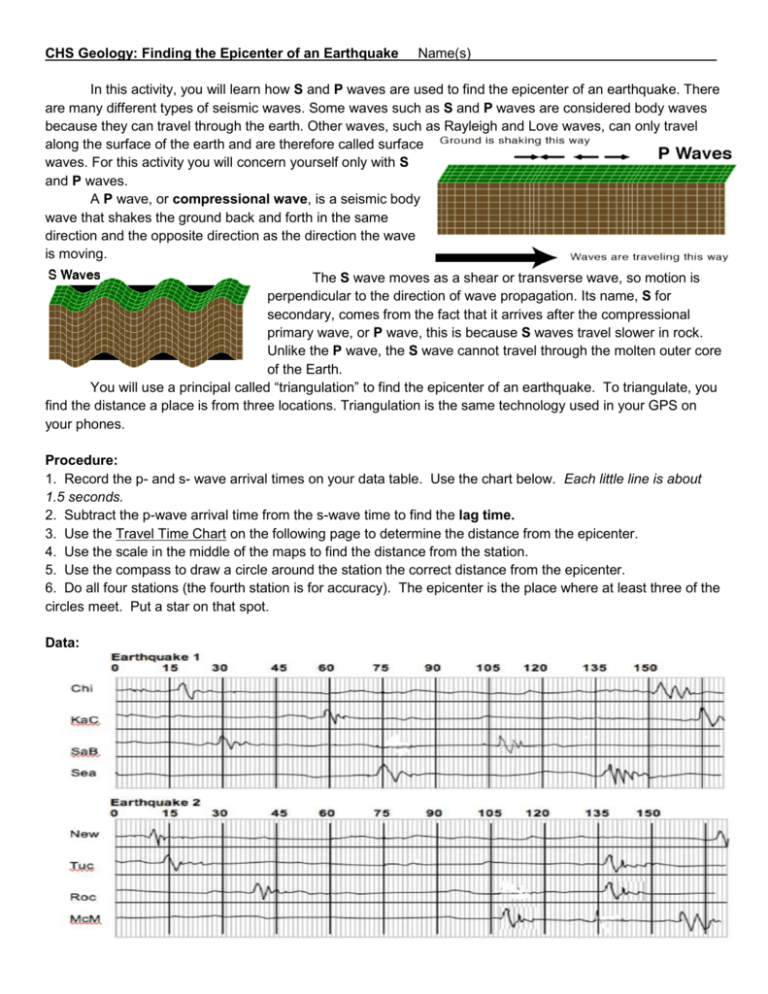
CHS Geology: Finding the Epicenter of an Earthquake Name(s)________________________________ In this activity, you will learn how S and P waves are used to find the epicenter of an earthquake. There are many different types of seismic waves. Some waves such as S and P waves are considered body waves because they can travel through the earth. Other waves, such as Rayleigh and Love waves, can only travel along the surface of the earth and are therefore called surface waves. For this activity you will concern yourself only with S and P waves. A P wave, or compressional wave, is a seismic body wave that shakes the ground back and forth in the same direction and the opposite direction as the direction the wave is moving. The S wave moves as a shear or transverse wave, so motion is perpendicular to the direction of wave propagation. Its name, S for secondary, comes from the fact that it arrives after the compressional primary wave, or P wave, this is because S waves travel slower in rock. Unlike the P wave, the S wave cannot travel through the molten outer core of the Earth. You will use a principal called “triangulation” to find the epicenter of an earthquake. To triangulate, you find the distance a place is from three locations. Triangulation is the same technology used in your GPS on your phones. Procedure: 1. Record the p- and s- wave arrival times on your data table. Use the chart below. Each little line is about 1.5 seconds. 2. Subtract the p-wave arrival time from the s-wave time to find the lag time. 3. Use the Travel Time Chart on the following page to determine the distance from the epicenter. 4. Use the scale in the middle of the maps to find the distance from the station. 5. Use the compass to draw a circle around the station the correct distance from the epicenter. 6. Do all four stations (the fourth station is for accuracy). The epicenter is the place where at least three of the circles meet. Put a star on that spot. Data: Data Table: Earthquake 1 Seismographic Station City p-wave arrival time s-wave arrival time Lag Time Distance from City p-wave arrival time s-wave arrival time Lag Time Distance from City Chicago Kansas City Santa Barbara Seattle Earthquake 2 Seismographic Station City Newport Tucson Rockville McMinnville Analysis: 1. Which wave arrives first? Why? 2. What instrument recorded the information from the p and s-wave arrival times? 3. Why didn’t the p-waves arrive in each city at the same time? 4. Does the lag time get shorter or longer the further you get from the epicenter? 5. How could you prove an epicenter was where you calculated it to be? Conclusion: Write a conclusion for this exercise below. Describe your findings and use data to help in your description.
